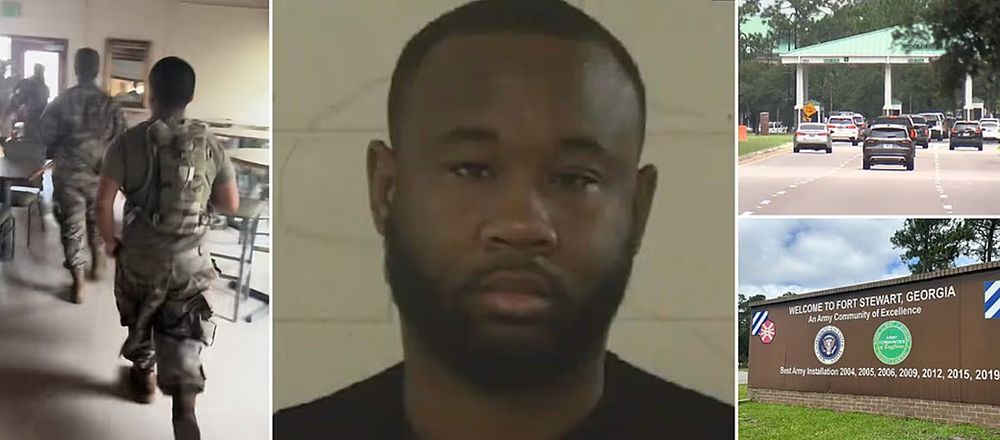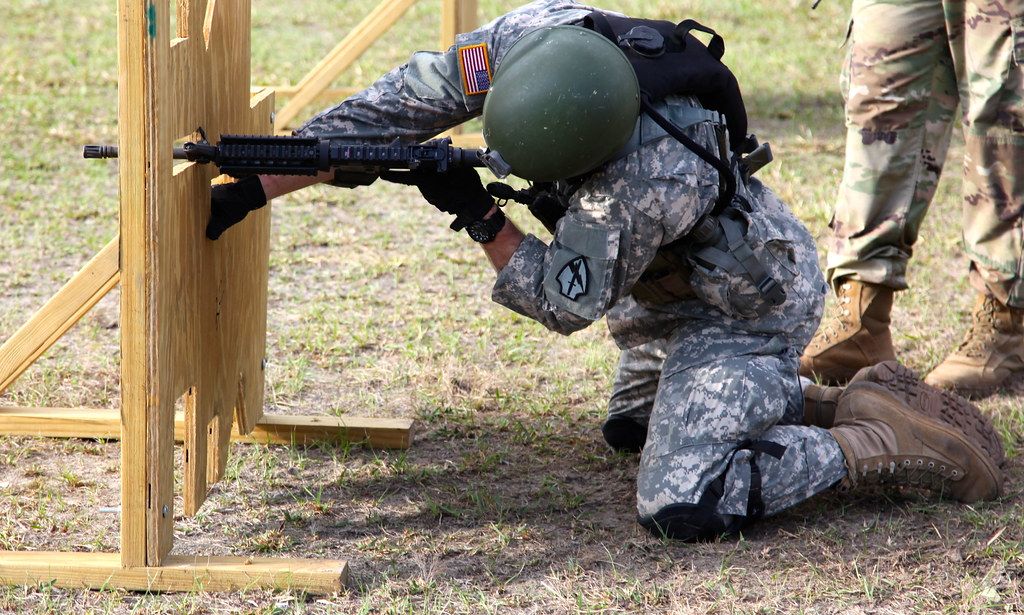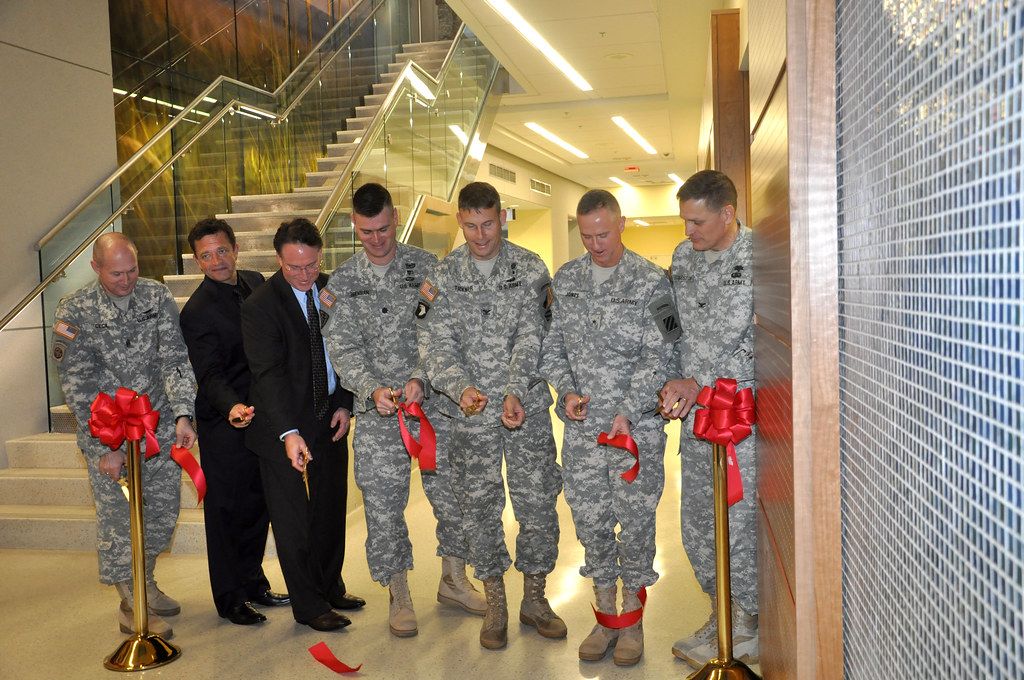
U.S. Army Sergeant Quornelius Radford, 28, is now in custody following an active shooter incident Wednesday morning at Fort Stewart in Georgia. Radford is accused of shooting five fellow soldiers at his workplace within the sprawling base’s 2nd Armored Brigade Combat Team (ABCT) area. Preliminary reports indicate Radford utilized a personal handgun in the attack, rather than an authorized military weapon. All five injured service members received immediate treatment on-site before being transported to Winn Army Community Hospital, where officials confirmed they are in stable condition and are expected to recover; three of the wounded soldiers later required surgical procedures.
Brigadier General John Lubas, commanding general of the 3rd Infantry Division, commended the remarkable bravery of nearby soldiers who swiftly intervened. He stated these individuals “immediately and without hesitation tackled the soldier, subdued him.” This decisive action played a critical role in preventing additional casualties and allowed law enforcement officers to take Radford into custody promptly. The incident triggered an immediate lockdown of the extensive military installation, one of the largest Army posts situated east of the Mississippi River.
Sgt. Quornelius Radford, a native of Jacksonville, Florida, began his service with the regular Army in January 2018. He holds the position of an automated logistics sergeant assigned to the 2nd ABCT, with responsibilities typically encompassing the management of supplies and warehouse operations. Army records indicate Radford had not been deployed to a combat zone during his military career, and General Lubas confirmed Radford’s military record contained no known behavioral incidents prior to Wednesday’s shooting.
The firearm allegedly used by Radford was identified as a 9mm Glock, reportedly acquired by the suspect in Florida during May. Law enforcement officials confirmed the weapon was recovered at the scene alongside numerous spent shell casings. A key area of the ongoing investigation involves determining precisely how Radford managed to bring a personal handgun onto the highly secure military base, as carrying such firearms is generally prohibited by military regulations. General Lubas underscored this concern, stating, “We’re going to have to determine how he was able to get a handgun to his place of duty.”

The timeline of Wednesday’s incident unfolded rapidly, beginning with law enforcement being dispatched to the scene at 10:56 a.m. ET. A base-wide lockdown of the 2ABCT area was promptly initiated at 11:04 a.m., occurring less than ten minutes after the initial dispatch. Emergency medical personnel were deployed to provide aid to the five wounded soldiers by 11:09 a.m., who were then transported to Winn Army Community Hospital.
The apprehension of Sergeant Radford followed swiftly, with officials reporting his capture at 11:35 a.m. Approximately 35 minutes after Radford was taken into custody, the lockdown affecting the “main cantonment area” of the base was officially lifted. Subsequently, a comprehensive “all clear” for Fort Stewart, Wright Army Airfield, and Evans Army Airfield was issued just before 2 p.m. local time, signifying the resolution of the immediate threat.
The specific motive driving the shooting remains an active and unresolved component of the ongoing investigation, with military officials declining to offer speculation. However, a law enforcement official briefed on the case indicated Radford had a disagreement with one of the victims on Tuesday, reportedly following him to a maintenance area and shooting him in the chest before firing upon four others. The precise nature of this antecedent disagreement has not been disclosed.

Adding to the details concerning Sgt. Radford’s background records indicate a prior arrest on May 18, 2025, by the Georgia Department of Public Safety. The charges stemmed from allegations of driving under the influence (DUI) and failing to obey a traffic control device. A summons revealed Radford purportedly informed the responding officer that he ran a red light due to an urgent need to use the bathroom.
General Lubas acknowledged this earlier DUI arrest “was unknown to his chain of command until the event occurred, and we started looking into the law enforcement databases.” Court records from Liberty County, Georgia, confirm Radford had been released on bond and was slated for arraignment on August 20. Attorney Sneh Patel represents Radford in this traffic case, though not in connection with the current shooting investigation.
Eddie Radford, the suspect’s 52-year-old father, told The New York Times he had not observed any unusual behaviors in his son and expressed unfamiliarity with what might have prompted the attack. The father also conveyed that his son, identified as Black, had voiced complaints regarding racism at Fort Stewart and sought a transfer, although specific details were not published. Fort Stewart officials declined to comment on these allegations or whether Radford had requested a transfer.
A spokesperson for the 3rd Infantry Division addressed the matter by stating, “The circumstances that led to the events today are currently under investigation.” The suspect’s father additionally noted Radford did not possess a history of significant mental health issues, but had occasionally grappled with depression linked to his mother’s childhood death. Currently, Sergeant Radford remains in pre-trial confinement, having undergone interviews by the Army Criminal Investigation Division, and awaits a charging decision from the Office of the Special Trial Counsel. Multiple law enforcement agencies, including the Hinesville Police Department and the FBI, are collaborating with the Army’s investigation.

Fort Stewart encompasses a vast expanse of land in southeast Georgia, covering an impressive 438 square miles, an area notably larger than New York City. This sprawling military installation serves as the home base for the U.S. Army’s 3rd Infantry Division, supporting over 10,000 individuals, including active-duty soldiers, their family members, and civilian employees. The base’s historical roots extend back to 1940 as an anti-aircraft training facility, steadily expanding in size and population to now serve thousands of military personnel, families, students, retirees, contractors, and civilian employees.
The shooting transpired in an area specifically home to the 2nd Armored Brigade Combat Team, widely recognized as the “Spartan Brigade.” This historic brigade traces its origins to 1917 in North Carolina, seeing its initial combat deployment during World War I. Although disbanded before World War II, several of its units actively participated in significant American military maneuvers.
The brigade was reconstituted in 1963, and since then has been strategically positioned in diverse global locations, including Germany, Kuwait, Iraq, Afghanistan, and across the African continent. Its deployments have encompassed a range of critical missions, from military strikes to humanitarian assistance and reconstruction efforts. In 2016, the Army chose to convert the Spartan Brigade into the 15th Armored Brigade Combat Team, transforming it into a modernized tank brigade, which the Army has lauded as its “most modern land fighting force.
The incident sent palpable ripples of concern throughout the base’s extensive community, especially among families residing on the installation. Sadie Mohrbacher recounted her distress after receiving a chilling text from her sister, Paige Siple, who lives on base, stating, “Active shooter on base. We are on lockdown.” Siple, home alone, took immediate precautions by locking doors, closing curtains, and seeking refuge in an upstairs closet with her dog. Three on-base schools for military personnel’s children, along with two elementary and one middle school in Liberty County, and all schools in Appling County, were placed under lockdown; all these lockdowns were later lifted.

In the shooting’s aftermath, military leadership articulated a clear priority: the well-being of the victims and the broader Fort Stewart community. Brigadier General John Lubas emphasized, “Our primary focus is first on caring for our injured soldiers and their families and also supporting the soldiers of the Spartan brigade.” He confirmed that the families of all victims had been notified, underscoring the ongoing efforts to “wrap our arms around them and ensure we provide them all the support that we can.”
The incident also garnered attention from top government officials. Both President Donald Trump and Defense Secretary Pete Hegseth received briefings and were closely monitoring the situation. President Trump publicly condemned the suspect as “horrible” and stated that the “entire nation is praying for the victims and their families.” Secretary Hegseth expressed his own prayers and resolved that “Swift justice will be brought to the perpetrator and anyone else found to be involved.” Governor Brian Kemp and Congressman Buddy Carter also issued statements of concern and support, while the Hinesville Police Department was among the responding agencies.
Wednesday’s shooting at Fort Stewart is regrettably not an isolated occurrence when viewed within the broader context of violence on U.S. military installations, which are designed to be among the country’s most secure locations. This event marks the second shooting in recent years within the 2nd Armored Brigade Combat Team’s workspace; in December 2022, Sgt. Nathan Hillman was fatally shot by a fellow soldier at the unit’s building complex. This incident also contributes to a troubling national statistic, being among at least 262 mass shootings that have occurred in the United States so far this year, according to the Gun Violence Archive.

The history of violence on U.S. military bases includes several high-profile and deadly incidents that underscore enduring security concerns. Notable past events include the 2009 terrorist attack at Fort Hood, Texas, where U.S. Army psychiatrist Major Nidal Hasan killed 13 people and wounded over 30. In 2013, defense contract worker Aaron Alexis killed 12 people at the Washington Navy Yard. Another Fort Hood incident in 2014 saw a soldier kill three and wound more than a dozen before dying by suicide. More recently, in 2019, shootings at Naval Air Station Pensacola and Pearl Harbor also resulted in multiple fatalities and injuries, highlighting persistent safety and security challenges within the armed forces’ walls.
As thorough investigations continue to unravel the precise sequence of events and underlying factors at Fort Stewart, the immediate priority remains squarely on providing comprehensive support to the injured soldiers and fostering the resilience of the wider military community. The swift and courageous actions demonstrated by fellow service members in subduing the alleged shooter undoubtedly played a pivotal role in averting further casualties, exemplifying remarkable bravery. While questions still linger concerning motive and security protocols, the unified response from leadership and law enforcement reflects a profound collective commitment to addressing this grave situation. The Fort Stewart community, a vibrant cornerstone of military life, now embarks upon a process of healing and understanding as the path forward unfolds.



